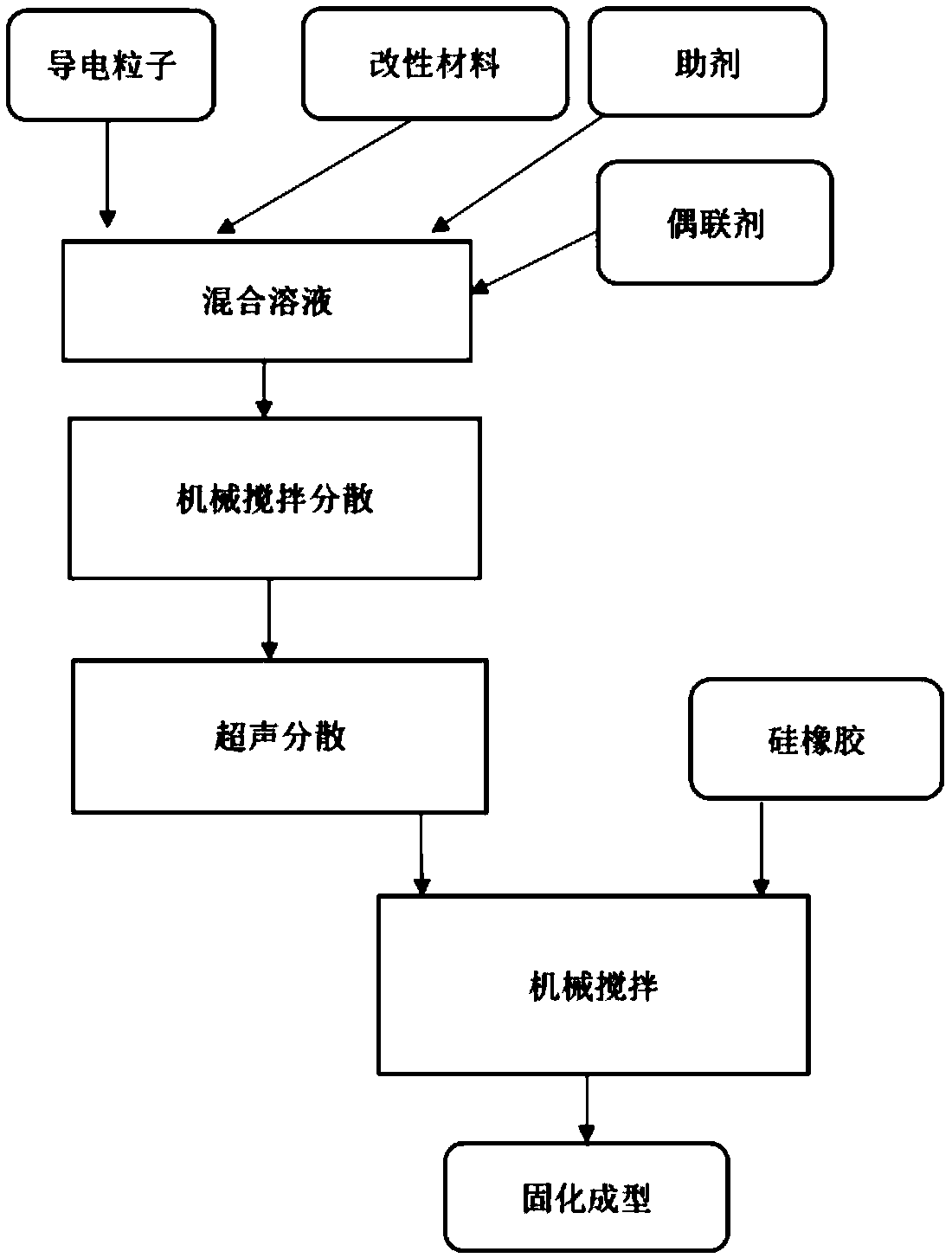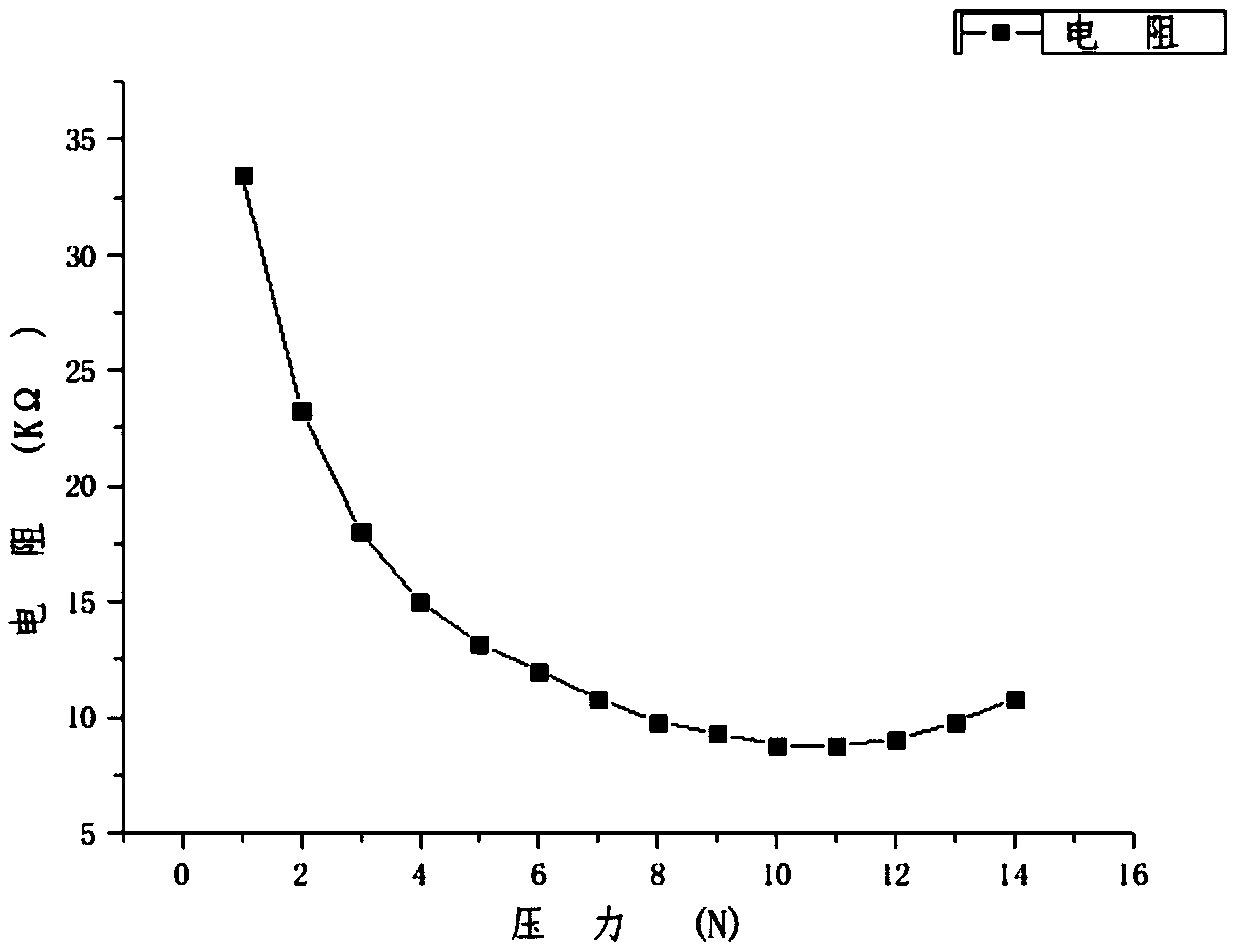Pressure-sensitive composite applicable to silk-screen printing technology
A pressure-sensitive composite material, screen printing technology, applied in the measurement of the property force of piezoelectric resistance materials, fluid pressure measurement by changing ohmic resistance, conductive coatings, etc., can solve the problem of less research on flexible array sensors and material utilization. Low rate, large thickness and other problems, to achieve the effect of simple structure, high material utilization rate and thin thickness
- Summary
- Abstract
- Description
- Claims
- Application Information
AI Technical Summary
Problems solved by technology
Method used
Image
Examples
Embodiment Construction
[0031] The technical solutions provided by the present invention will be further described below in conjunction with the accompanying drawings.
[0032] In the preparation process of the prior art, the preparation of the pressure-sensitive film is mostly realized by means of uniform glue, etc. After curing and molding, the pressure-sensitive layer of the required shape is obtained from the film. This process is too inefficient and the material utilization The efficiency is also low, which is not suitable for the preparation of large-area sensing arrays.
[0033] Therefore, how to prepare a high-performance, low-cost and suitable pressure-sensitive composite material for screen printing is the key. On the basis of a large number of theoretical and experimental analysis, the present invention proposes a formula of a pressure-sensitive composite material and its preparation process.
[0034] The applicant found in the research that the one-component room temperature vulcanized si...
PUM
 Login to View More
Login to View More Abstract
Description
Claims
Application Information
 Login to View More
Login to View More - R&D
- Intellectual Property
- Life Sciences
- Materials
- Tech Scout
- Unparalleled Data Quality
- Higher Quality Content
- 60% Fewer Hallucinations
Browse by: Latest US Patents, China's latest patents, Technical Efficacy Thesaurus, Application Domain, Technology Topic, Popular Technical Reports.
© 2025 PatSnap. All rights reserved.Legal|Privacy policy|Modern Slavery Act Transparency Statement|Sitemap|About US| Contact US: help@patsnap.com



